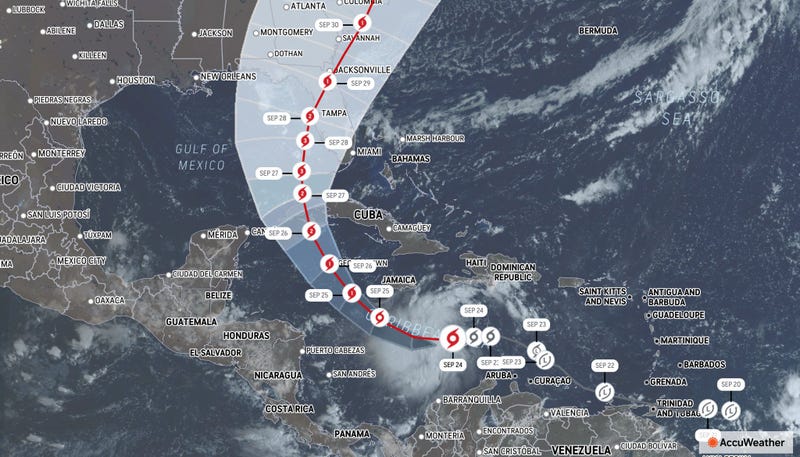
(Accuweather) Tropical Storm Ian formed over the central Caribbean Sea late Friday night, and increasingly looks to be the most serious hurricane threat to the eastern U.S. so far this year, particularly for Florida.
As of Saturday at 5 a.m. Eastern Time, the tropical storm was tracking westward with a forward speed of 14 mph. Sustained wind gusts were up to 45 mph. Forecasters said that conditions were becoming more conducive for strengthening early Saturday.
The current forecast track from the National Hurricane Center brings Ian across North Central Florida Wednesday and Thursday, but exact timing is still to be determined.
Ian could undergo rapid intensification in the days ahead as it churns northward and the wind shear continues to subside.
Florida Gov. Ron DeSantis declared a pre-landfall state of emergency late Friday afternoon for 24 counties that are at risk of being struck, which include:
Brevard
Broward
Charlotte
Collier
DeSoto
Glades
Hardee
Hendry
Highlands
Hillsborough
Indian River
Lee
Manatee
Martin
Miami-Dade
Monroe
Okeechobee
Osceola
Palm Beach
Pasco
Pinellas
Polk
Sarasota
St. Lucie
“This storm has the potential to strengthen into a major hurricane,” DeSantis said in the declaration, “and we encourage all Floridians to make their preparations.”
A hurricane track into the west coast of Florida from this part of the Caribbean isn't especially common, but it has occurred in the past couple of decades. Hurricane Charley originated from the south-central Caribbean and made a hard right turn into Florida after traveling northward across western Cuba in August 2004. Charley struck the Tampa area of Florida as a Category 4 hurricane.
Next in the path of the storm will be the Cayman Islands and western and central Cuba, both of which will have a higher chance for a direct hit. The Cayman Islands are located to the south of Cuba and will feel the deteriorating effects of the system from Sunday afternoon to Monday. The worst conditions in Cuba are likely from later Monday through Tuesday, given the storm's projected forward speed.
The system is likely to strike the western part of Cuba as a Category 2 hurricane or stronger.
